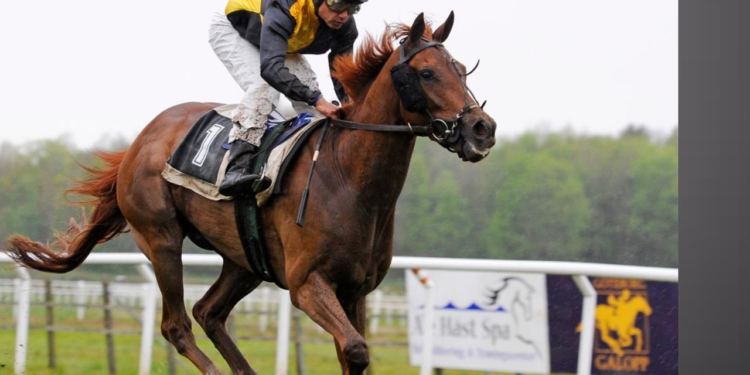Racing is a demanding sport, not just for humans but for horses too. After a race, a horse’s body undergoes significant strain, necessitating proper care to recover and prepare for the next competition. Following the appropriate practices can minimise recovery time and ensure the horse’s overall well-being. In this article, we’ll share six essential tips to help speed up your horse’s recovery after a race.
1. Check for injuries and soreness
The first thing to do after a race is to inspect your horse to detect any signs of injury and discomfort. Look for swelling, heat, or sensitivity in the legs and joints. These areas are more prone to stress during high-intensity races.
If you notice any abnormalities, consult a veterinarian immediately. Many horses suffer from common injuries in racehorses, such as tendon strains, ligament damage, or stress fractures. Early detection and treatment can prevent these issues from worsening, ensuring a faster recovery.
Be sure to incorporate regular massages or physiotherapy sessions to help alleviate muscle tension and promote blood circulation. Such therapies enhance recovery while keeping your horse relaxed and comfortable.
2. Prioritise hydration
Be sure to keep the horse hydrated. Your horse loses a significant amount of water and electrolytes through sweat during a race, which can lead to dehydration if not addressed quickly.
After the race, provide your horse with clean, fresh water. You could also consider offering an electrolyte supplement to replenish lost minerals. Electrolytes help restore the balance of sodium, potassium, and chloride, which are crucial for muscle function and recovery. With that being said, do not give large amounts of water immediately after the race, as this might cause discomfort. Instead, offer small amounts at intervals to allow the horse to rehydrate gradually and effectively.
3. Cool down gradually
Implementing a proper cooling-down routine is essential after a race. Intense physical activity results in the buildup of lactic acid in the muscles. This leads to soreness and stiffness if not addressed promptly. Below are tips for cooling down your horse after a race:
- Post-race walk: Immediately after the race, walk your horse for 15 to 20 minutes to gradually lower its heart rate and improve blood flow to the muscles. This helps flush out waste products like lactic acid.
- Cold water therapy: Hosing your horse with cool water can prevent overheating and inflammation. Focus on areas that experience the most strain during racing, such as the legs, tendons, and joints.
A proper cooldown routine reduces discomfort and prevents further injury.
4. Provide nutritious meals
Feeding your horse the right nutrients after horse racing is essential for muscle repair and energy restoration. A race drains a horse’s glycogen stores, vital for endurance and performance. However, do not overwhelm your horse’s digestive system too quickly. Here’s how to feed your horse after a race:
- Hay first: Allow your horse to nibble on hay shortly after a race. This provides the horse with fibre and prevents gastric distress.
- Gradual grain feeding: Introduce a small grain meal a few hours after the race to supply energy for muscle repair. Avoid feeding large amounts immediately, as stress can impact digestion.
- Invest in supplements: Add recovery supplements like amino acids and Omega-3 fatty acids. This can promote muscle repair and reduce inflammation. Equell provide a range of premium, quality horse supplements manufactured in the UK utilising natural ingredients to support all aspects of horse health and nutrition. Muscle Up is packed with essential prebiotics, vitamins, minerals and amino acids – perfect for supporting muscle health, digestion, assisting recovery times and aiding optimal performance in competition horses.
Giving your horse a balanced diet supports tissue regeneration and replenishes energy stores. This allows your horse to get back to full strength faster.
5. Let your horse rest
Rest is often overlooked, but it is crucial for recovery. Your horse’s body requires enough time to repair damaged tissues and restore energy levels after the physical strain of racing.
Allow your horse to spend time in a stress-free environment, preferably a well-maintained pasture that can allow it to move freely without pressure. Movement helps prevent stiffness and enhances circulation, which speeds up recovery.
Create a balance between rest and light activity to avoid complete inactivity, which leads to issues like stocking up( swelling in the legs due to lack of movement). Be sure to monitor your horse’s behaviour during rest periods. Look out for signs of distress or lethargy as they indicate a deeper issue that may require immediate attention.
6. Monitor and adjust training routines
Your horse’s recovery does not end with rest. You further need to reintroduce training gradually to avoid overexertion and potential setbacks. Create a training strategy that takes into account your horse’s recovery status. This ensures a slow and steady return to peak condition.
Start with low-impact activities like walking and trotting, then gradually increase intensity over days and weeks. Pay attention to your horse’s responses, including reluctance to move or signs of pain, as they indicate the need for more recovery time.
Consider investing in tools like heart rate monitors to track your horse’s fitness levels and readiness to train. These devices provide valuable insights into how well your horse is recovering and adapting to its workload.
Endnote
Speeding up your horse’s recovery after a race entails combining proper care, nutrition, and rest with vigilant monitoring. Be sure to hydrate, cool down, and address potential injuries promptly to help your horse bounce back quickly and stay in top condition for future competitions. Remember, every horse is unique, and recovery time varies depending on the horse’s age, fitness level, and the intensity of the race.











































































